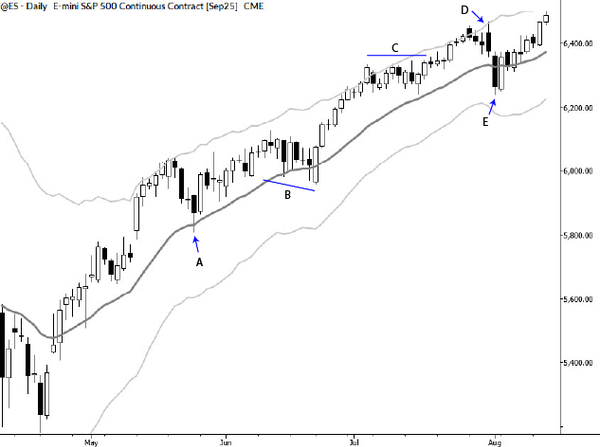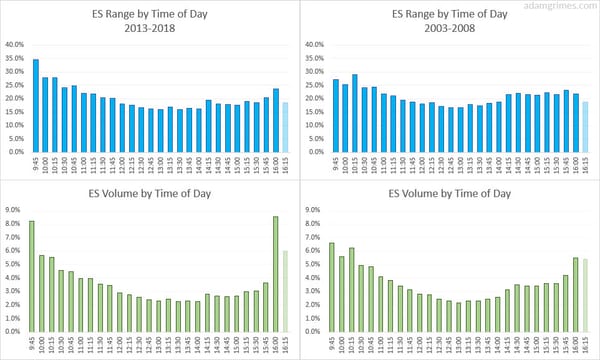Reader Question: Can We Use Indicators and Trade Price Action?
Today’s question comes from Mohammad, but the question emerged over the course of a more extensive discussion, with other people contributing, clarifying, and confusing! Here’s the question, paraphrased:
If we trade “price action” can we and should we use indicators?

This is an old question. I first remember seeing the “price action wars” in online discussion groups in the early 2000’s. It seemed everyone wanted to be labeled a “price action” trader, but there was a group that strongly felt that anyone who put any indicator or line on their chart could not be in the club and wear the price action trader hat. As with most online disagreements, this became a passionate and long-lasting discussion
Of course, it’s all silliness. Price action is just a way to describe patterns in prices. Today’s some people oversimplify it (like the fx traders’ focus on “pin bars”), and many others make it very complicated so you have to pay for ongoing training to understand it.
The best way to think about this is to take a middle ground approach. Personally, I find an indicator that structures price so I know when we are more or less extended helps. In fact, I would find it very difficult to trade a completely bare chart, but the addition of a channel around an intermediate-term average provides very useful structure. (I use Keltner Channels set 2.25 ATRs around a 20 period EMA.)
You can, if you wish, add other indicators, but be careful that you a) understand how your indicator works and b) don’t use too many indicators that tell you the same thing. For instance, putting two versions of stochastic on your chart with slightly different inputs is probably a waste of time. Putting stochastic and MACD on your charts might also be too much overlap, but maybe MACD and RSI (a momentum and a mean-reversion indicator) could be a useful combination.
Also think about the patterns you will trade. Most candlestick patterns don’t show an impressive edge out of context. (So then the obvious question is does the context you put them in change that edge?) You want something as simple as possible, as reproducible as possible, but there will undoubtedly be room for nuance if you are a chartreader.
So, the short answer is you can use indicators or not and be a price action trader. If you use them, make sure you use indicators that contribute something useful to your process!
Here are a few more thoughts on price action, drawn from my first book, The Art and Science of Technical Analysis: Market Structure, Price Action, and Trading Strategies (pg 13-14):
Price action is a complex and imperfectly defined subject. There are many traders who believe that price action is something nebulous that cannot be quantified. To other traders, trading price action means trading the patterns of price bars on charts, without the addition of indicators or other lines. In this book, price action simply means how markets usually move, which, frankly, is, usually randomly and meaninglessly. Be clear on this point: markets are usually random and most of the patterns markets create are also random. However, there are times when … price movement …is somewhat more predictable.
Price action is the term used to describe the market’s movements in a dynamic state. Price action creates market structure, which is the static record of how prices moved in the past.
Think about a finger tracing a line in the sand. Market structure is the line left in the sand; price action describes the actual movements of the finger as it drew the line.
In the case of a finger, we would talk about smooth or jerky, fast or slow, and lightly or with deep pressure into the sand.
In the case of actual price action, we would look at elements such as:
- How does the market react after a large movement in one direction?
- If aggressive sellers are pressing the market lower, what happens when they relax their selling pressure?
- Does the market bounce back quickly, indicating that buyers are potentially interested in these depressed prices, or does it sit quietly, resting at lower levels?
- How rapidly are new orders coming into the market?
- Is trading one-directional, or is there more two-way, back-and-forth trading? Are price levels reached through continuous motion, or do very large orders cause large jerks in prices?
All of these elements, and many more, combine to describe how the market moves in response to order flow and a myriad of competing influences.



